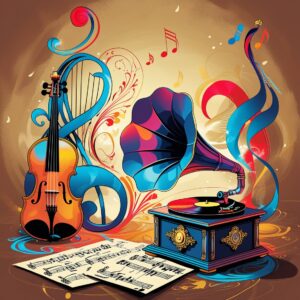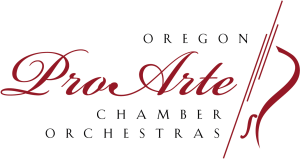The Classically Attuned Roots of Pop
The late 1950s and 1960s saw pop acts expanding beyond built-for-radio formats into bigger. It was about enlarging the emotional range. The Beatles helped popular music look more confident when it came to arranging. They began to use strings, brass, and other non-traditional pop textures on tracks that still hit hard on the charts. Songs like Eleanor Rigby showcase a simple, haunting melody carried by a string quartet, while A Day in the Life used a full orchestra to create a dramatic lift that still lands as a moment of storytelling. The effect is a sense that pop can be intimate and expansive at the same time.
Around the same time, Procol Harum drew directly on Baroque mood and technique. The organ line in A Whiter Shade of Pale channels Bach‑like counterpoints in a way that feels fresh on a rock stage. This period saw early experiments in long-form structure and thematic development that would echo later in art rock. Musicians started to think in terms of motifs that could recur, develop, and shift mood across a track, not just a single verse and chorus.
Embracing longer forms and technical precision, groups such as Emerson, Lake & Palmer produced full‑blown adaptations of classical material, such as Mussorgsky’s Pictures at an Exhibition. They reimagined them through modern instrumentation and recording techniques. The result was a new kind of blend – music that could feel “epic” without losing the immediacy of a rock groove. The trend opened doors for later acts to explore orchestral textures with guitars and synthesizers in concert settings and on records.
Orchestration, Arrangement, and Production
Orchestration is the most visible way classical ideas enter pop: a string section, a brass flourish, or a choir turning a tune into something cinematic. In the mid-60s, collective experiments with orchestral textures became a signature feature of landmark albums. The arrangements shaped the emotional architecture of the songs. A small string ensemble could shield a chorus in warmth or drive a melody forward with urgent crescendos, giving a track a sense of scale that a guitar duo alone might not achieve.
Digital samplers and virtual instrument libraries let producers layer strings and woodwinds with ease, creating lush textures without the expense of an actual orchestra. The effect is a fusion of precision and drama: synthetic timbres that behave like their acoustic cousins, but with the flexibility to be endlessly sculpted. The result is a modern sound world where a pop track can carry the weight of a film score without losing its pop immediacy.
Choral textures and brass arrangements show up in pop ballads as an emotional lift, in rock epics to punctuate a turning point, and even in electronic tracks where a choir pad creates a sense of expansion and mystery. Beyond sound, the way music is arranged—how lines are balanced, how density grows in a chorus, how a bridge pivots—mirrors classical sensibilities. The modern producer can honor tradition while pushing toward new sonic frontiers, and listeners still respond to that blend of old-world craft and contemporary energy.
Genre Case Studies
 The Beatles’ string-infused tracks changed the game, proving a pop hit can carry orchestral color without losing hit‑song clarity. Queen’s Bohemian Rhapsody goes further, rolling an operatic arc into a rock epic and showing that classical drama can live side-by-side with electric guitar theatrics. These tracks are blueprints of how different vocabularies can fuse without losing immediacy or hook.
The Beatles’ string-infused tracks changed the game, proving a pop hit can carry orchestral color without losing hit‑song clarity. Queen’s Bohemian Rhapsody goes further, rolling an operatic arc into a rock epic and showing that classical drama can live side-by-side with electric guitar theatrics. These tracks are blueprints of how different vocabularies can fuse without losing immediacy or hook.
In the metal world, symphonic and power metal groups embraced full orchestral textures as a core part of their sound. Heavy guitar and drum riffs work alongside real or sampled orchestras and choirs in bands like Nightwish and Epica. The outcome is a grand, cinematic music, where scale itself is part of the message.
In a contemporary rap album, a live or virtual orchestra could be providing the arrangements, lending tracks a cinematic haze that supports dense, rhetorical lyricism. Production can range from subtle string pads beneath a verse to a full-blown orchestral outro. Electronic acts borrow classical timbres as a means of adding emotional heft to synthetic textures, using strings or choir samples to heighten drama and atmosphere. In all of these cases, the core move is the same: bring in a different kind of energy to elevate mood, tension, and release.
When a track lands with the confidence of a suite, listeners hear a sense of narrative stakes, a clear arc, and a dramatic payoff. The technique is about borrowing the language that makes large-scale storytelling feel natural, then applying it to songs that want to live on the radio and in headphones at the same time.
Practical Ways to Bring Classical Influence into Modern Works
A memorable melodic idea can anchor a track and allow you to explore variations without losing focus. Try repeating the idea at varying intervals, then alter its rhythm or range to push mood changes across the song.
Add a careful layer of strings, woodwinds, or a brass color to create a sense of space and drama. You don’t need a full orchestra to evoke this effect. A string quartet or a few wind parts recorded with care can transform a track. When arranging, balance density with clarity so each instrument presents the mood you are aiming for.
Enrich the harmony by using chord colors and modal flavors. Digital orchestral libraries let you experiment with orchestration and keep costs low. A layer of digital strings under vocals, or a choir pad behind a bridge, can give a song cinematic sweep that snatches the ear. The goal is to support emotion and narrative, not overwhelm the groove. Keep the production tied to the song’s core energy, so the classical touches feel purposefully musical rather than flashy.
